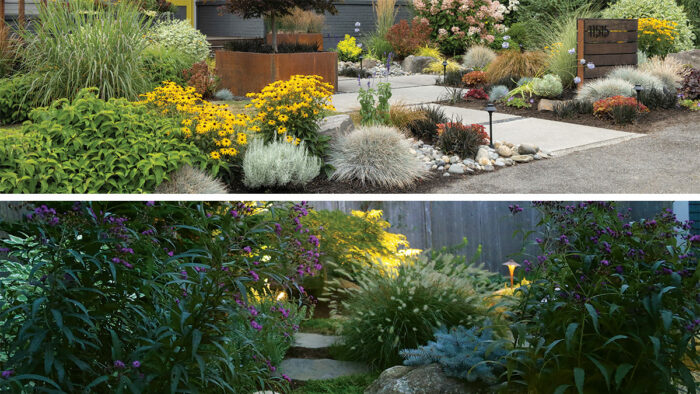
Whether you live in an urban setting or a slightly larger suburban spot, space can often be a factor when it comes to garden choices. We all face a conundrum: What do I truly have space for? And what is really important to include in a garden if I want it to be as interesting as possible? When faced with big questions like these, it’s best to ask the experts, so we consulted two award-winning designers: Christie Dustman from the East Coast and Courtney Olander from the West Coast. Each was recently asked by two distinct clients to plan and plant a small urban garden, and through those experiences they learned a lot of hard lessons about what works (and what doesn’t) when building a successful small landscape. If you are struggling with a lack of square footage, let the following profiles on each of these gorgeous city gardens inspire you.
East Coast urban garden design: A backyard that provides privacy and a place to party
Designer: Christie Dustman
Location: Boston
The city of Boston is well-known for its storied past, which is on full display along each street of historic row houses. Such were the surroundings Christie Dustman found herself in when she first arrived at this charming narrow lot east of the city center. Sandwiched between two neighboring homes, the backyard was quite skinny and lacking any appreciable outdoor living space. The goal, as Christie put it, was to create “a hidden magical oasis in a small urban backyard within a very tightly packed city.” This was accomplished by adding elevated garden beds, installing unique hardscaping, and making privacy a top priority. The result was a stunning private refuge within a bustling metropolitan area.

Key elements
What: Skinny backyard on a tight city lot
Size: 1,800 square feet
Zone: 6
Conditions: Full sun (with a tiny spot of shade); dry, well-drained soil that was amended liberally
Challenges: Lack of privacy from the neighboring homes; no year-round interest; no room for entertaining
- Stone bridge
- First patio
- Shed
- Dry streambed
- Elevated planting area
- Planters for edibles
- Roof-deck
- Second patio
Don’t scrimp on the hardscape
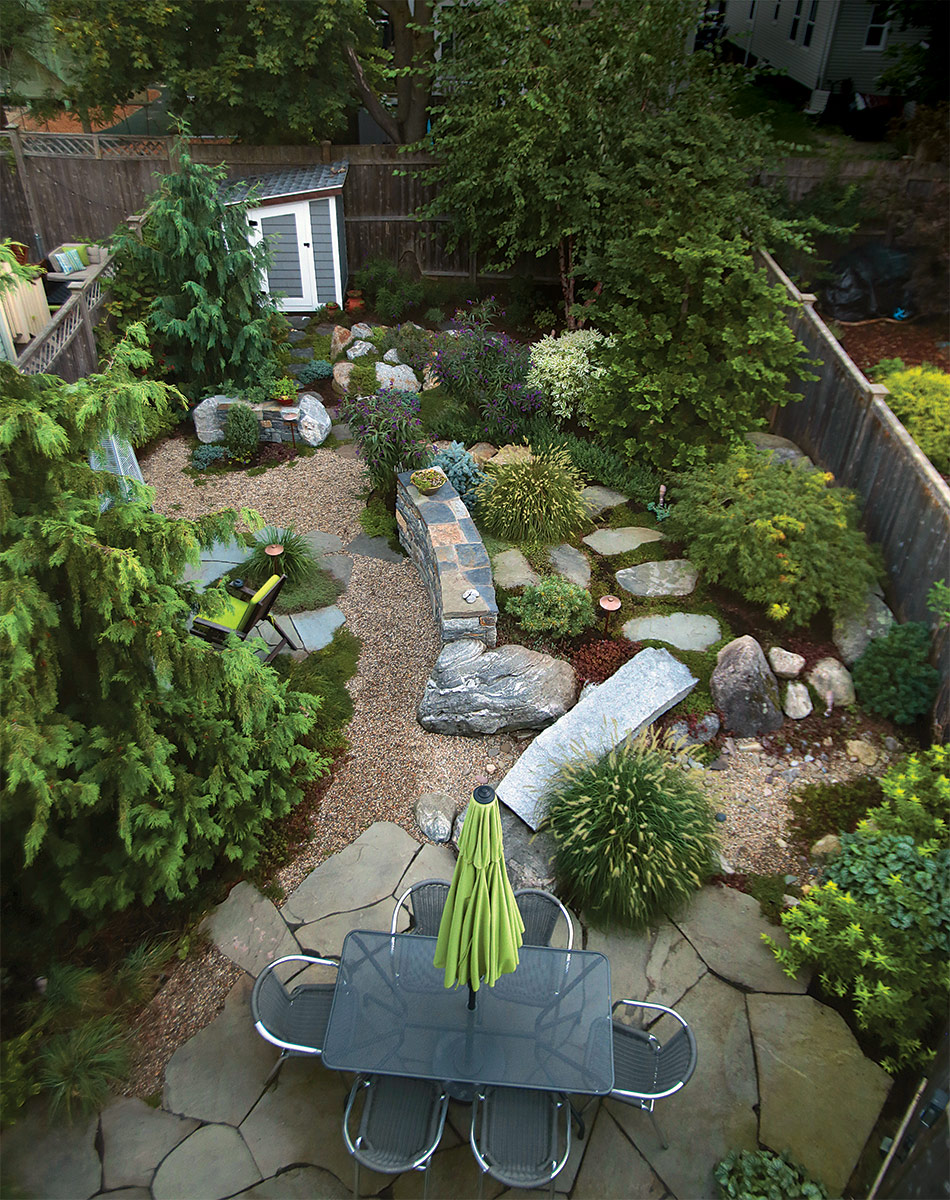
The first step was to map out future circulation patterns through the space. These paths would ensure free passage around new plantings and planned seating areas, and they would provide access to a new custom shed at the rear of the garden. Yes, the paths could have been small and narrow like the space itself, but this, argues Christie, would have made the garden feel claustrophobic. Instead, she opted for generous peastone walkways. The same approach of “no downsizing needed” was taken with the rest of the hardscaping.
Stonework abounds in this backyard, from two bluestone patios to the various irregular boulders scattered about as four-season focal points. There is even a stone bridge (built from a recycled curb) connecting two parts of the garden, a stone wall for visual height variation, and a dry streambed that adds even more of a wow-factor to the space. The stonework shines year-round and looks good even when this New England garden is buried in snow. The hardscaping does take up a lot of real estate, but it provides invaluable bones to the garden.
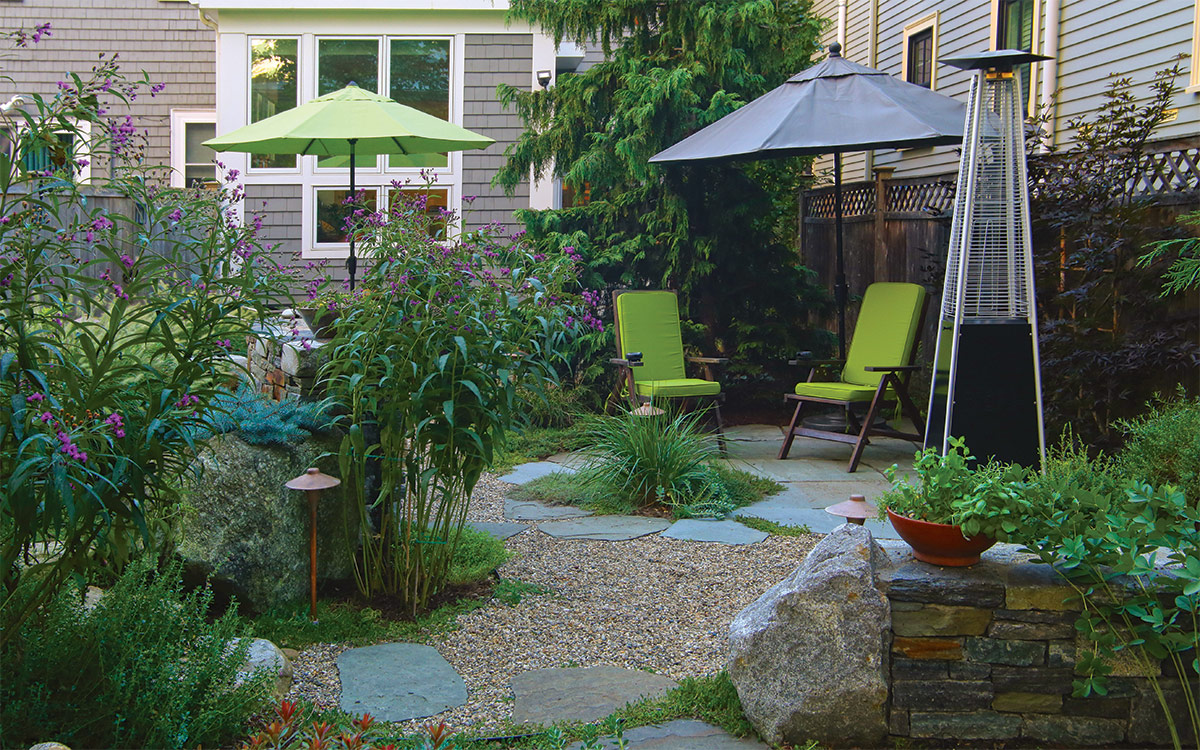
Add some elevation
Like most city lots, this backyard was very flat. Adding some sort of contour to the land seemed like an admirable goal to Christie and her team. Elevation would also help with another challenge: making the garden look good from several vantage points (the first floor of the home, the roof-deck on the second floor, and a new patio at ground level). “I brainstormed on the idea of creating a raised middle area, using a hidden block wall along the fence and a seating wall on the other side, with boulders at both ends,” Christie says. With an elevated planting area, any trees, shrubs, and perennials sited there would be higher in the air and offer more screening from the back property line. And the faux berm would break up the flatness of the space.
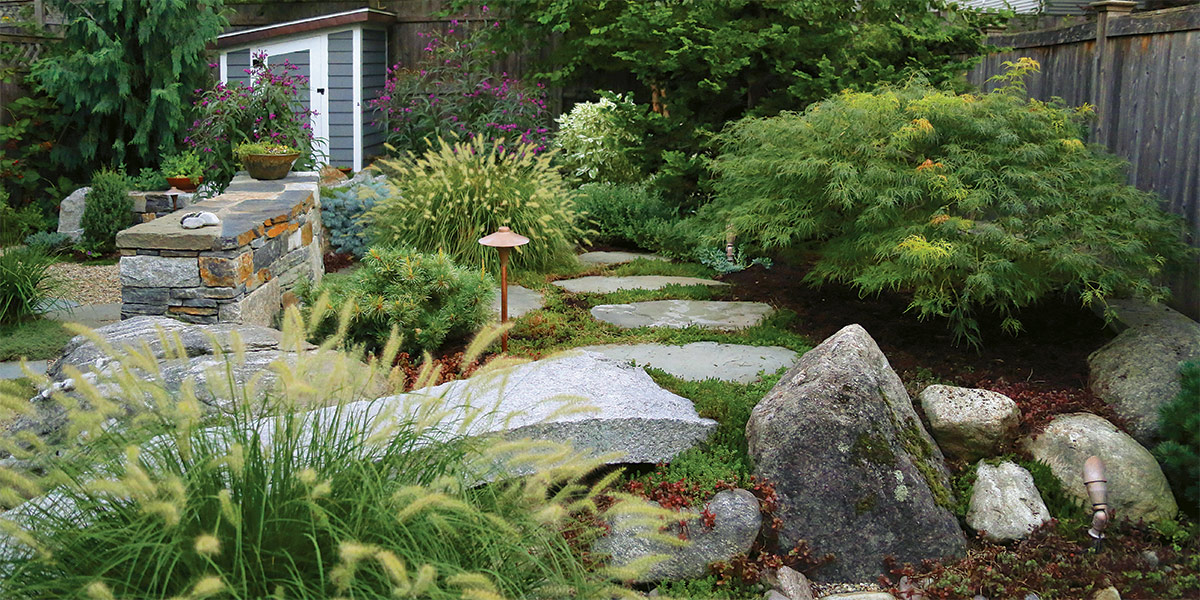
Building this raised bed allowed for more plantable space as well. Christie’s client is an avid gardener who wanted a malleable and changeable garden, not just a static landscape. The elevated garden has rich, well-draining soil that’s perfect for a collection of choice conifers, including ‘Gracilis’ Hinoki cypress (Chamaecyparis obtusa ‘Gracilis’, Zones 4–8), an array of ornamental grasses, and even a stand of native New York ironweed (Vernonia noveboracensis, Zones 5–9). Texture and leaf-color variation were valued more than flowers when it came to plant choice.

Get more growing space with containers
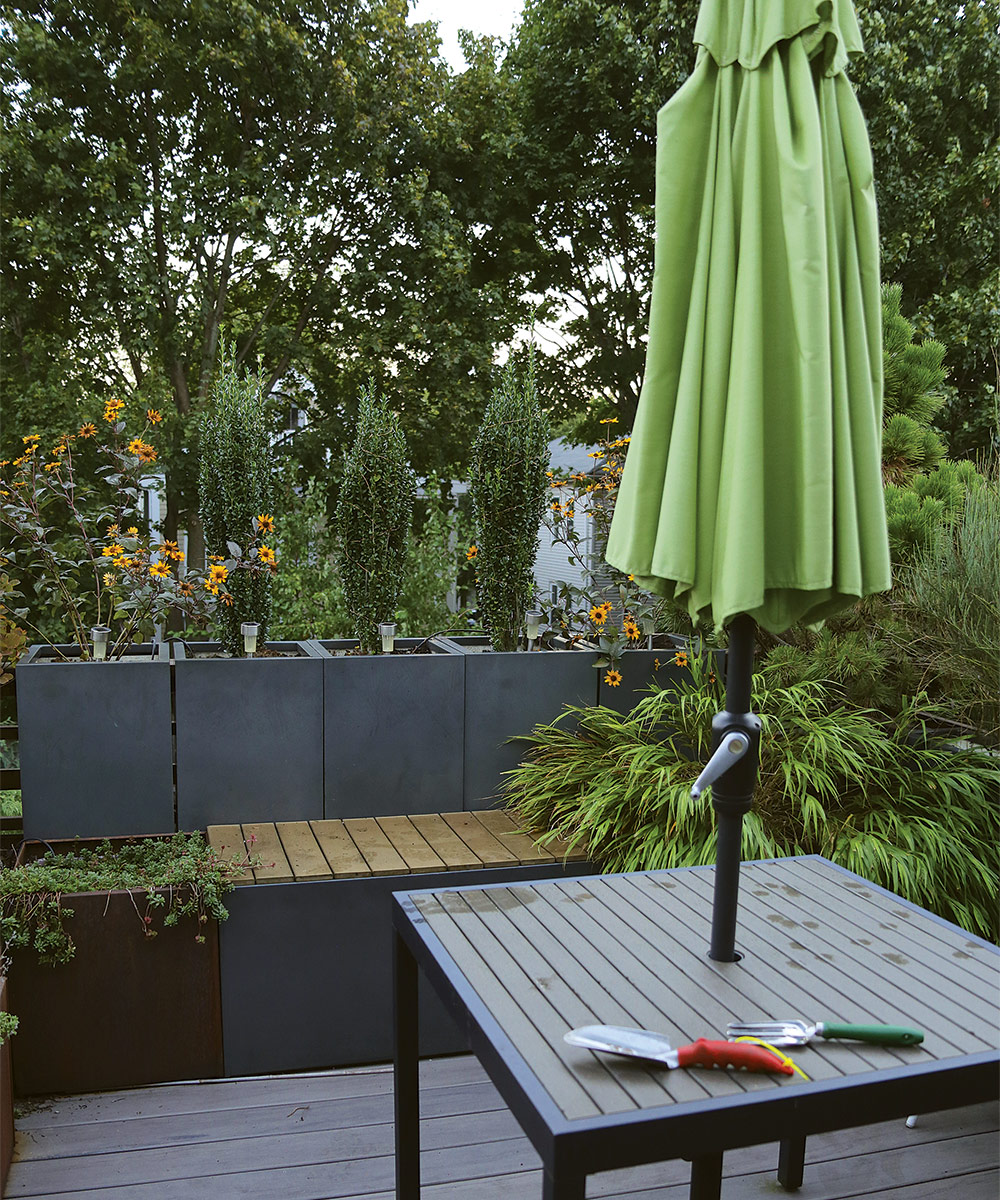
As if a narrow city lot didn’t provide enough design challenges, this site was conditionally tough as well. “The site is super-duper hot—full southern exposure in the center of the yard and dry,” says Christie. In addition to the conifers and grasses, there’s a selection of drought-tolerant plants, such as an assortment of sedums (Hylotelephium spp. and cvs., Zones 3–9) and germander (Teucrium spp. and cvs., Zones 4–9). To provide more space for plants, modern metal planters were installed along the fence lines. These were filled with vegetables, herbs, and even raspberries. A similar set of planters is positioned along the edges of the second-story roof-deck. These containers are filled with plants that provide some height for privacy and texture year-round. ‘Sky Pencil’ Japanese holly (Ilex crenata ‘Sky Pencil’, Zones 6–8) and ‘Aureola’ Japanese forest grass (Hakonechloa macra ‘Aureola’, Zones 5–8) are two notable standouts (photo above).
The plants both in the gardens and in the planters do the heavy lifting in this garden from spring through winter. The stonework is always present, but without the trees, shrubs, and perennials, this garden wouldn’t be the four-season wonder that it is.
Christie’s Favorites
Great plants for year-round structure in a small spaceThese are a few of the plants that Christie relies on for interest in all 12 months.
|
West Coast urban garden design: A front yard that makes a good first impression
Designer: Courtney Olander
Location: Seattle

On the West Coast, the problem of space (or lack thereof) doesn’t disappear. In the city of Seattle and its suburbs, small postage-size lots are the norm—and that’s where designer Courtney Olander does much of her work. When she initially drove up to this home, it was clear to her that the front yard needed help. “The primary goal of the homeowners was to give their midcentury home a contemporary feel and to up the curb appeal big time,” Courtney says. The couple wanted to change the current entry experience into something more inviting. After all, the trip from the car to the front door doesn’t need to be boring, even when space is limited.

Key elements
What: Postage-stamp front yard just outside the city limits
Size: 2,200 square feet
Zone: 8
Conditions: Full sun to partial shade; moist, well-drained soil
Challenges: Determining which plants would stay and which would go; uneven hardscape; curb appeal lacking
- Front door
- Zigzag concrete walkway
- Granite paths
- Steel container with maple
- Planter used for drainage
- Deck
- Dry streambed
Use meandering paths to make the journey seem longer
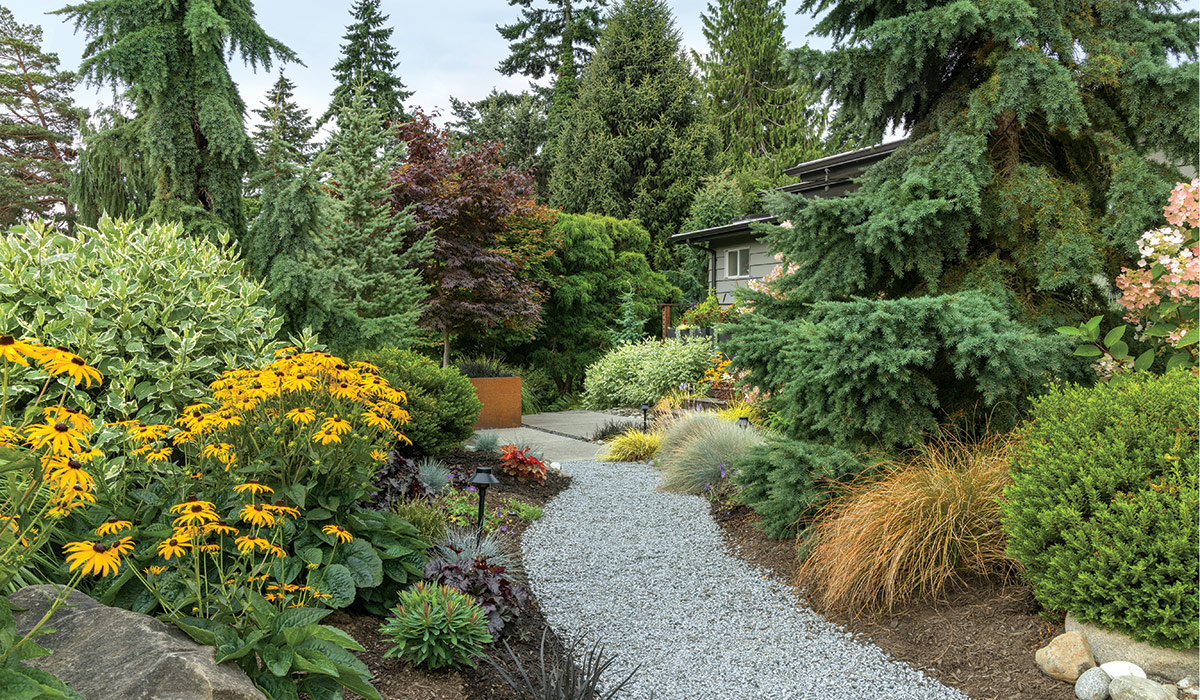
The existing hardscaping consisted of an uneven flagstone walkway that led from the front door directly to the street. There was no connection from the driveway to the front door, so a pathway there that the family would use on a regular basis was the first thing that needed to be installed. In place of the flagstone path, Courtney and her team poured a series of concrete pads rimmed with 2-inch river rock. These landing pads were arranged in a zigzag around a 4-foot-tall-and-wide steel planter, which was installed slightly askew from the front door.
Crushed granite paths break off on either side of the concrete entry path, resembling something you might hike along while in the forests outside Seattle. One path meanders through the preexisting hemlocks (Tsuga mertensiana, Zones 5–7) and the newly planted black-eyed Susans (Rudbeckia fulgida, Zones 5–9) to the driveway. The other descends down natural granite steps under a canopy of vine maples (Acer circinatum, Zones 6–9). The winding nature of the paths forces users to slow down and thereby gives the impression that the space being traveled through is bigger. “I wanted the front entry to involve a ‘journey’ around the planters and through the hemlocks. Removing the straight shot to the door from the street was key,” says Courtney.
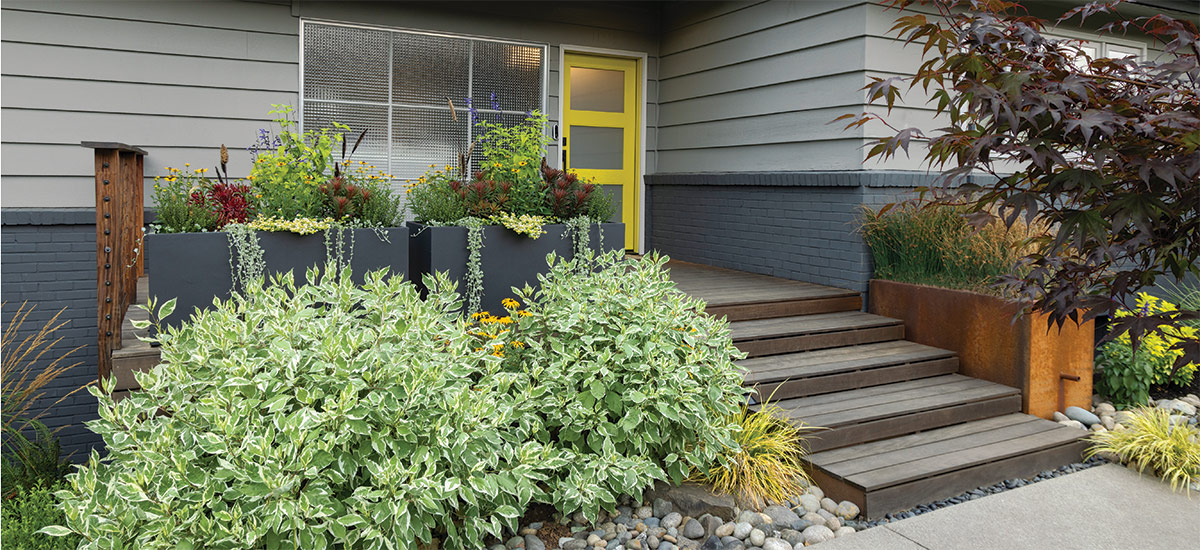
Provide invaluable screening with planters
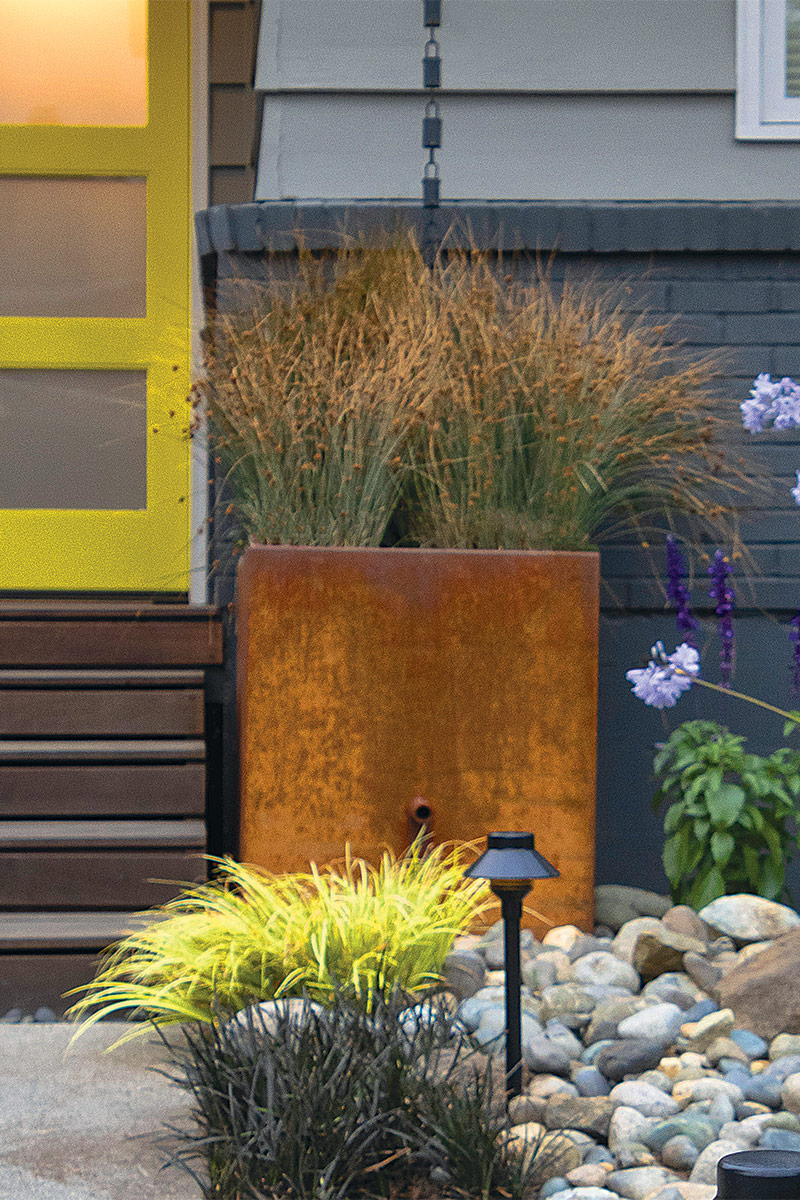
It’s hard to miss the large, square planter surrounded by the zigzag concrete walkway. This is more than just an eye-catching feature, however. Once the large ‘Red Emperor’ Japanese maple (Acer palmatum ‘Red Emperor’, Zones 5–9) was planted in it, the container provided screening for the deck as well as a welcome diversion from the once-direct path to the front door.
Drainage was an issue in this small garden, so the design had to include ways to capture and divert rain. The area that collects water to the right of the entry during heavy rains was transformed into a focal point by the installation of a second steel planter that captures water from a new rain chain and diverts it through a spout into a dry streambed and rain garden. ‘Blue Arrows’ rush (Juncus inflexus ‘Blue Arrows’, Zones 5–9), with its rust-tinged seed heads, echoes the color of the steel and flourishes year-round in the planter. A final set of containers became important when replacing the deck. Here, Courtney placed large rectangular planters across the front instead of a railing, which provided an opportunity for seasonal plantings that would also add some screening.
Rely on bold colors for the focal points
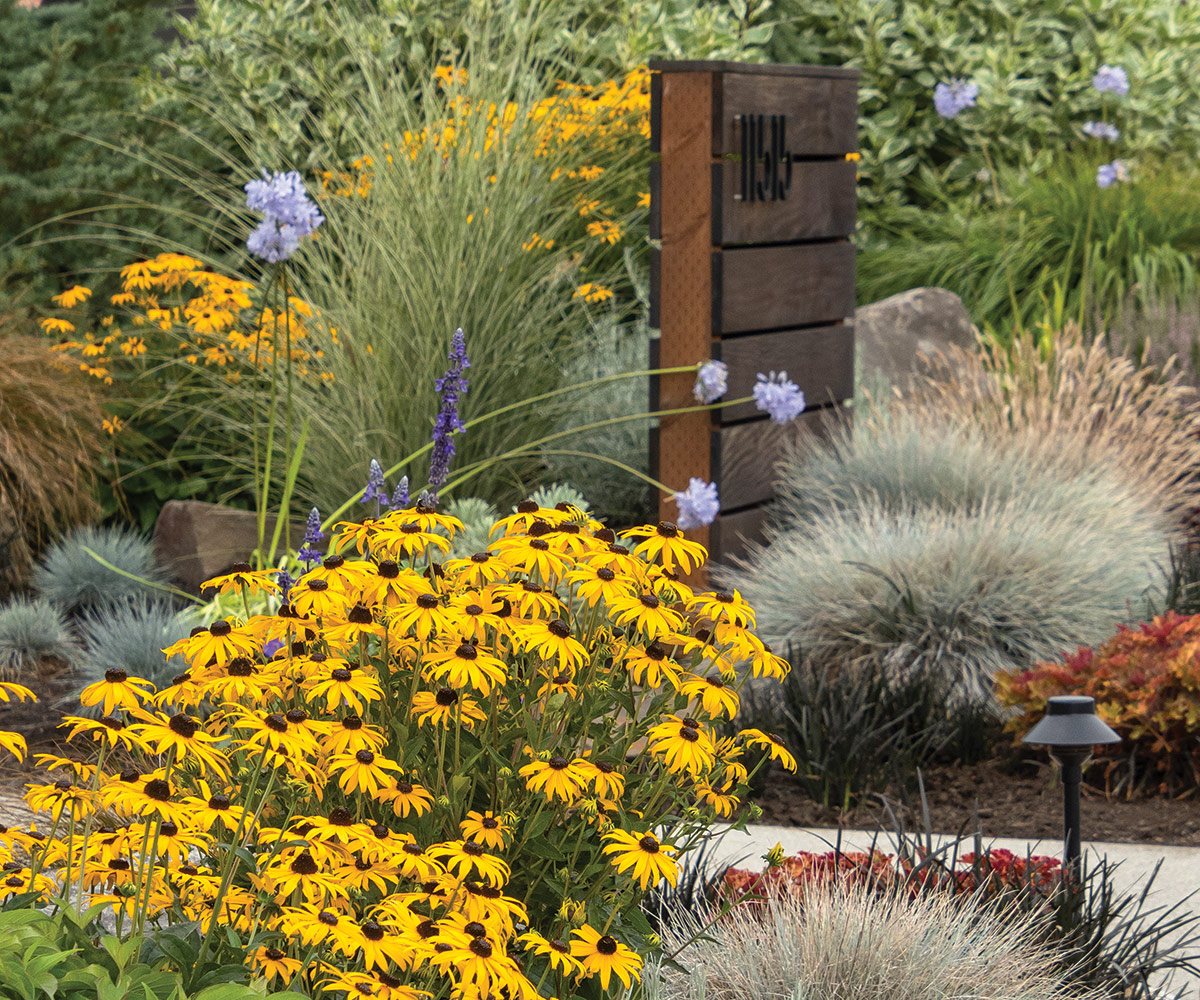
You can’t pull up to this garden without immediately noticing the bright yellow front door. “The homeowners asked me to choose a new front door and exterior paint colors,” says Courtney. “We decided on two shades of gray for the house paint to act as a neutral backdrop, and a vibrant citrus shade of yellow for the front door that acts as the touchstone color for the plant selections throughout the garden.” The only plants that were on site were four mountain hemlocks and two vine maples, which were kept to give the front garden instant maturity. A mature burning bush (Euonymus alatus*, Zones 4–8) and a lot of weeds were removed to make way for an array of yellow and chartreuse plants such as black-eyed Susans, ‘Everillo’ Japanese sedge (Carex oshimensis ‘Everillo’, Zones 5–9), and Sundance® Mexican orange blossom (Choisya ternata ‘Lich’, Zones 7–10). These carry the bright citrus color of the door throughout the garden and are truly the beacons of interest in this space.
Adding to the interest is an array of ornamental grasses and small evergreens that continue the show into fall and winter. These ensure that there is never a dull moment in this small front yard.
Courtney’s Favorites
Great focal-point plants for small gardensNot all focal-point plants need to be big and bold. These are a few of Courtney’s favorite undersized stars.
|
*Invasive alert: Burning bush (Euonymus alatus)
This plant is considered invasive in CT, DE, GA, IN, KY, MA, MD, ME, MN, NH, NJ, NY, PA, RI, SC, TN, VA, WI, and WV.
Please visit invasiveplantatlas.org for more information.
Danielle Sherry is the executive editor.
Illustrations: Savannah Gallagher
Photos, except where noted: Danielle Sherry


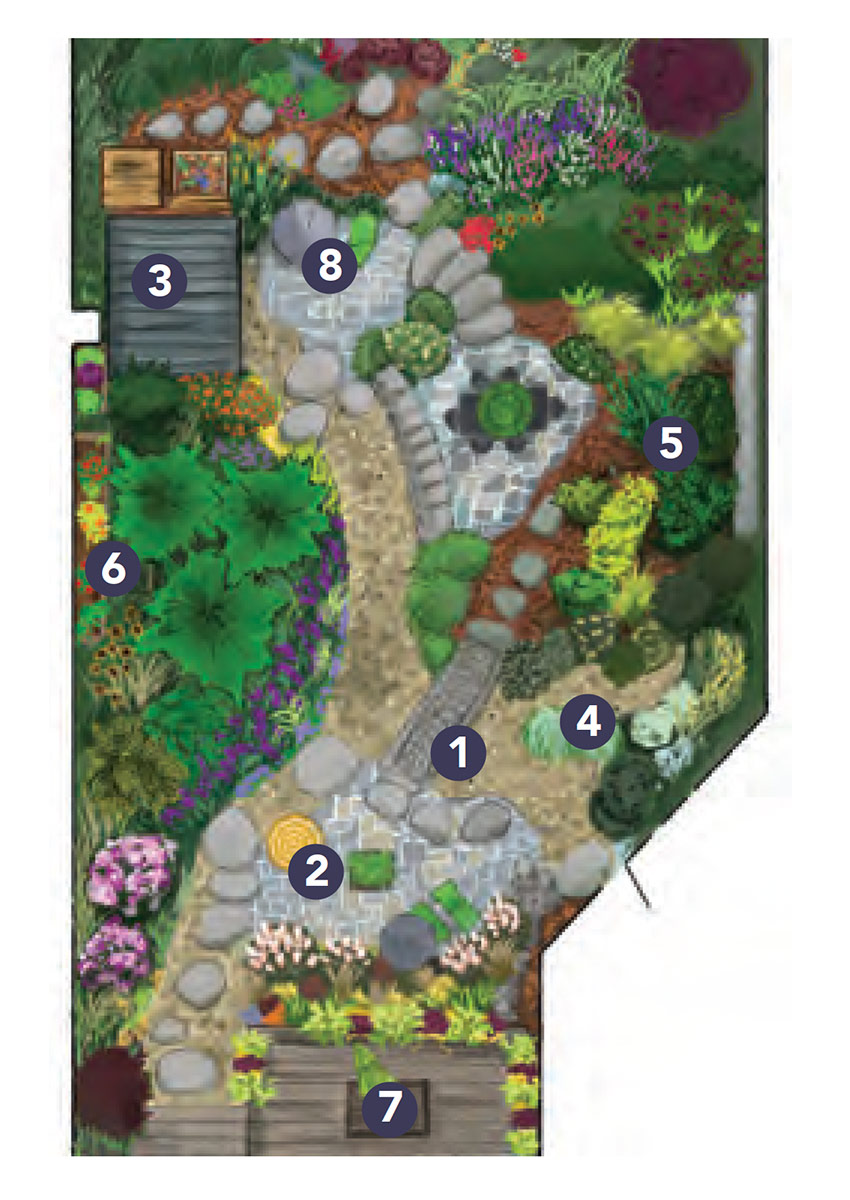







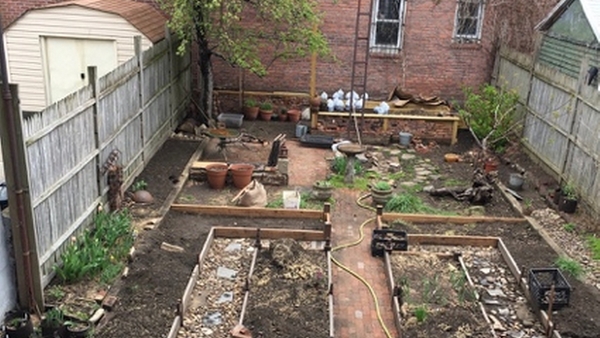
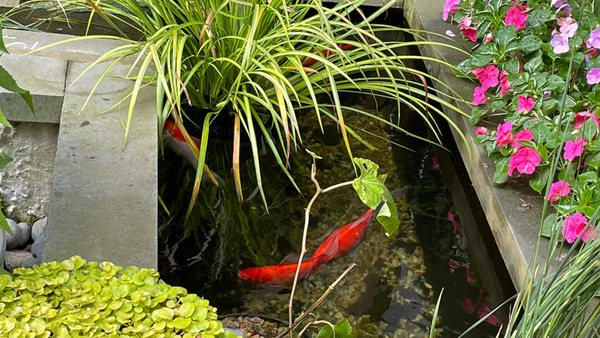

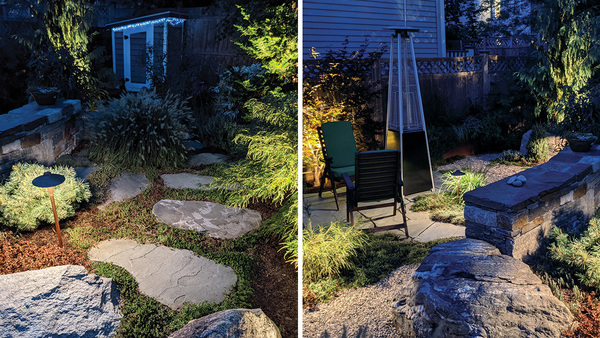
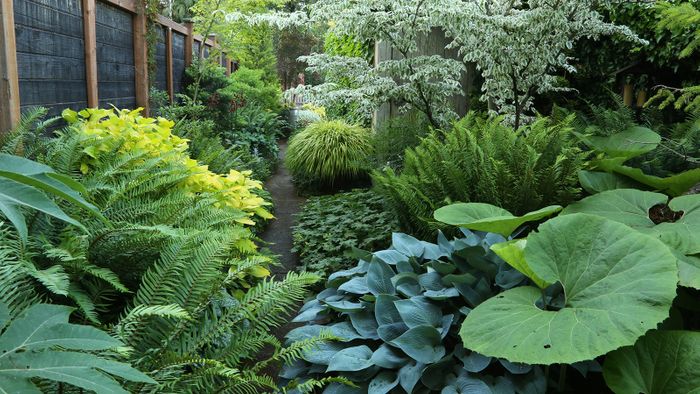
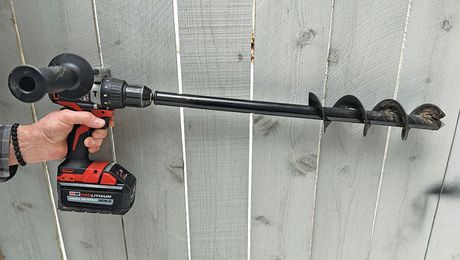






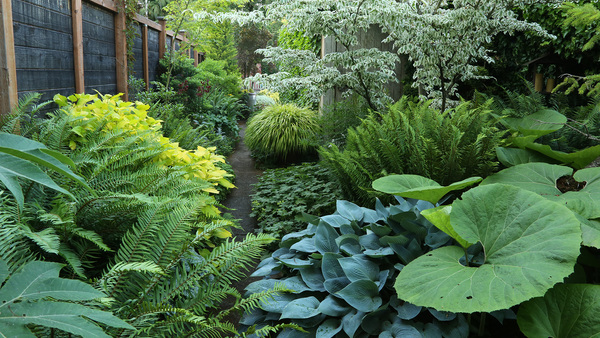



Comments
Log in or create an account to post a comment.
Sign up Log in